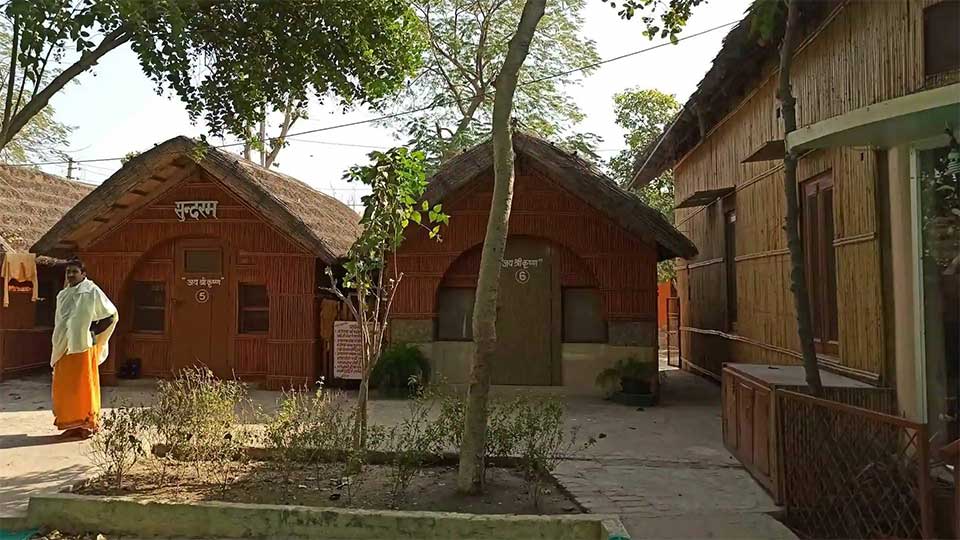Vrindavan, a timeless haven of spirituality and devotion, beckons pilgrims and seekers worldwide. While the city is renowned for its iconic temples like Banke Bihari, ISKCON, and Prem Mandir, it harbors lesser-known gems in its tranquil corners. Join us on a journey through these unexplored sanctuaries, each offering a unique glimpse into the rich spiritual tapestry of Vrindavan.
Raman Reti - Gokul
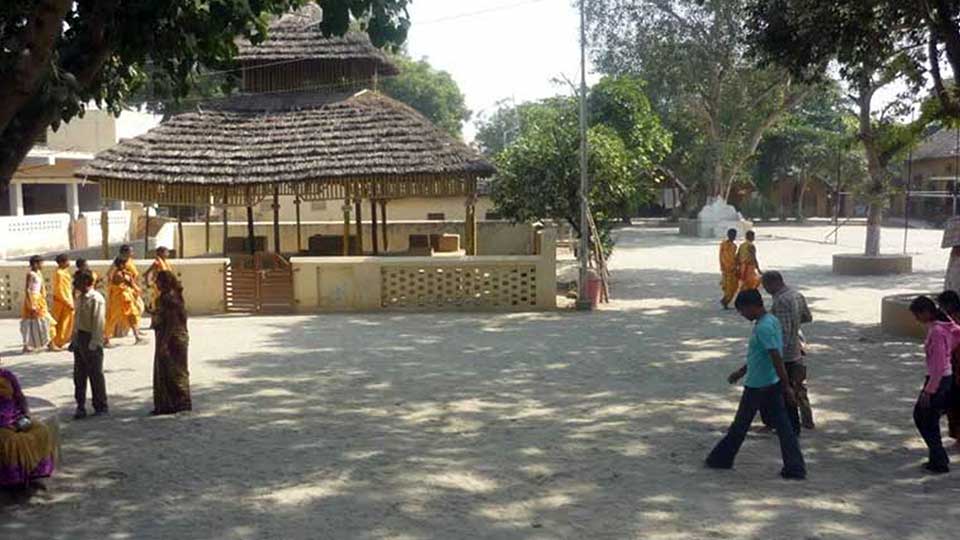
Tucked away in the heart of Gokul, Raman Reti is a hidden oasis that whispers tales of Lord Krishna’s divine escapades. The sacred sands of Raman Reti bear witness to Krishna’s playful moments with his beloved brother Balarama and his cherished cowherd companions. It was on these sands that Krishna and Radha met before embarking on their journey to Vrindavan.
Today, Raman Reti is a serene sanctuary with a deer sanctuary, enchanting temples, and a tranquil space where pilgrims and ascetics find solace. But beyond its peaceful exterior lies a treasure trove of stories that echo through the grains of sand. Visitors can immerse themselves in the timeless tales of Lord Krishna as they wander through this mystical complex.
Adjacent to Raman Reti, Karshni Ashram awaits discovery. This renowned ashram is home to the ancient Raman Bihariji Temple. Dedicated to the 18th-century Saint Gyandasji, this temple uniquely depicts Lord Krishna—a form revealed to the saint as a blessing for his unwavering devotion. A visit to this hidden gem is necessary for those seeking spiritual resonance in this mystical land.
Nandbhavan - Nandgaon
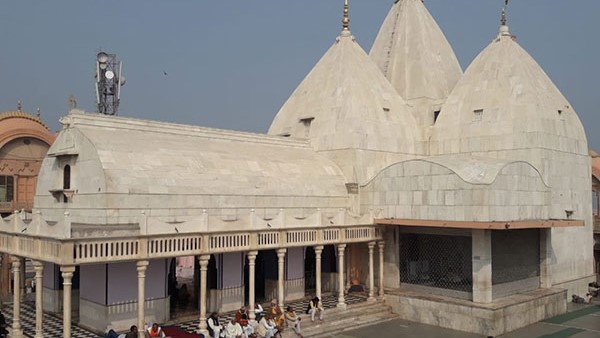
Perched atop a lush mountain peak, Nandbhavan in Nandgaon unveils itself as an abundant abode that witnessed Lord Krishna’s vibrant youth and endearing childhood stories. Nandbhavan’s vast complex sprawls gracefully, revealing palatial rooms and mythical spaces woven into the tapestry of spiritual significance.
The crown jewel of Nandbhavan is the magnificent 19th-century red sandstone temple of Nand Raiji. Within its sacred walls, intricate paintings and murals bring to life the enchanting episodes that unfolded within these hallowed halls. Here, the deities of Nand, Yashoda, Lord Krishna, Balarama, Goddess Radhika, and other cherished family members are lovingly enshrined. Nandbhavan, though often bustling with pilgrims, retains a timeless aura—a portal to a bygone era that transports visitors to a world of devotion.
Nandeshwar Mahadev Temple - Nandgaon
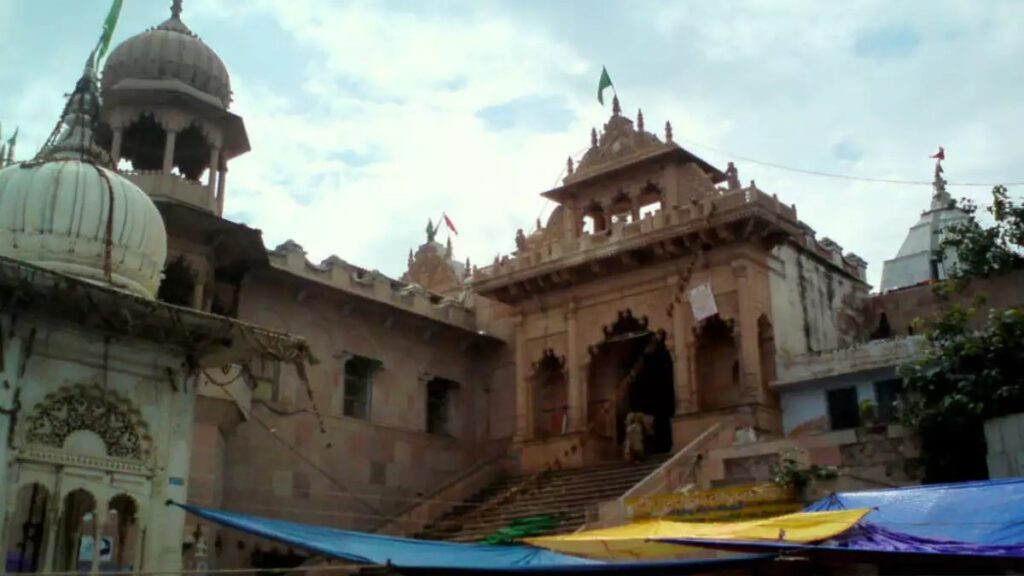
Near Nandbhavan Temple in Nandgaon stands the traditionally prominent Nandeshwar Mahadev Temple—a hidden gem devoted to Lord Shiva. This ancient temple houses a revered Shiva Linga believed to have been installed by Lord Krishna’s grandson, Vajranabha. Nandeshwar Mahadev Temple stands as a guardian, protecting Nandbhavan from negative influences.
Legend has it that Lord Shiva, in his characteristic form adorned with coiled snakes and ash smears, sought the blessings of the angelic child form of Lord Krishna. However, Mother Yashoda, taken aback by Shiva’s imposing appearance, initially denied him entry. What followed was a heartwarming encounter that left everyone touched. Shiva’s request for a divine morsel from Krishna is a symbol that endures today, epitomized by the prasad offered at Nandeshwar Mahadev Temple.
Barsana

Nestled approximately 40 km (about 24.85 mi) northwest of Mathura, Barsana is a testament to divine love—an unexplored haven once graced by the enchanting goddess Radha, Lord Krishna’s eternal consort. Barsana’s lush landscape is cradled between Brahma Hill and Vishnu Hill, each adorned with centuries-old temples forming a divine tapestry across the village.
Among these temples, the Ladliji Mandir atop the Bhangarh peak gleams like a hidden jewel. Enshrined by Vajranabh almost 5,000 years ago, this temple is a masterpiece of architectural finesse. Its curvaceous arches, lofty domes, and evocative depictions of Radha-Krishna create a captivating aura. The temple pulsates with spiritual fervor, particularly during festivals like Radhashtami and the unique Holi celebrations—an indigenous tradition unique to this region.
Kokilavan Dham

Located 10 km (about 6.21 mi) from Kosi Kalan, near Mathura, Kokilavan Dham offers a peaceful sanctuary dedicated to Lord Shani Dev, the deity of death and justice. This sprawling complex attracts devotees from across the country, especially on Saturdays and Shani Amavasyas, owing to the deity’s special significance.
Legend has it that Lord Shani, after being denied the opportunity to witness the newborn Lord Krishna in Nandvan, sought solace through meditation at Kokilavan Dham. Lord Krishna, pleased by Shani’s devotion, blessed him with the melodious strains of his flute and directed him to this sacred abode. Today, Kokilavan Dham remains a heavenly haven visited by countless believers who anoint the main deity with oil, seeking solace and strength in the face of life’s challenges.
Brahmand Ghat - Gokul
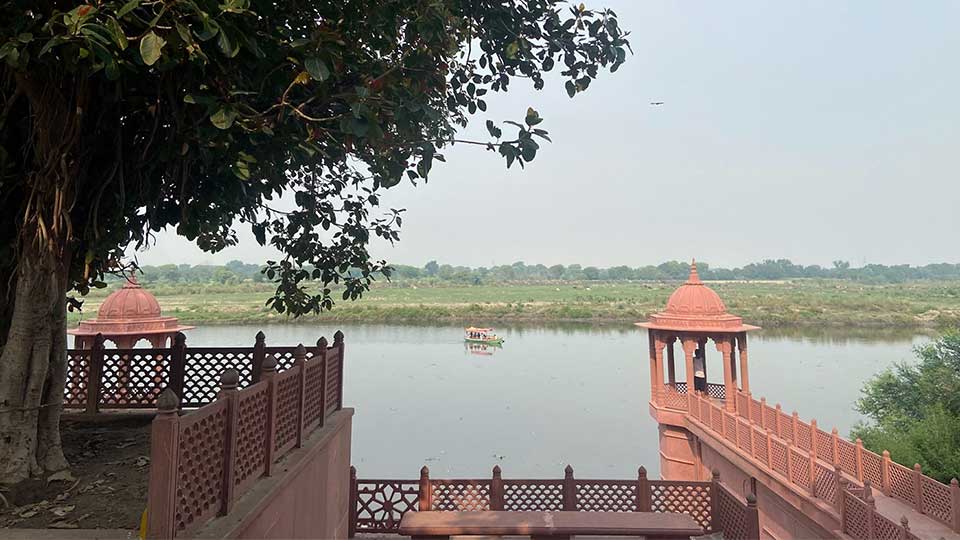
Approximately 15 km (about 9.32 mi) southeast of Mathura, Gokul beckons with its mythological stories of Lord Krishna’s childhood, enshrined in its glorious places, structures, temples, and environs. One such place of significance is Brahmand Ghat—a tranquil stretch along the river Yamuna.
Brahmand Ghat derives its name from a captivating legend. It is said that infant Krishna ingested a few mud particles while playing with his friends. To the astonishment of his foster mother, Yashoda, Krishna revealed the entire cosmic universe within his tiny mouth. Thus, Brahmand Ghat came into being—meaning “the universe.” Amid the mystical narratives echoing through the town, Brahmand Ghat boasts an old temple overlooking the serene Yamuna River.
Exploring Brahmand Ghat can be a serene experience, where you can sprinkle drops of Yamuna River water on yourself before paying your respects at the nearby Krishna Temple. Just outside the temple, packets containing sacred mud from the region are sold for a mere Rs. 10, believed to possess magical healing powers.
These hidden treasures in Vrindavan invite you to delve deeper into the spiritual and cultural tapestry of the city. While the famous temples and landmarks hold their allure, these lesser-known sanctuaries offer a more intimate and immersive connection with Vrindavan’s timeless devotion. In the quiet corners of this sacred land, the echoes of divine stories still resonate, waiting to be heard by those who seek them.
In Vrindavan, where every brick and stone carry the essence of devotion, these hidden gems are the keys to unlocking the city’s spiritual mysteries. As you traverse these lesser-explored paths, may you find solace and a deeper connection with the divine.
Madan Mohan Temple
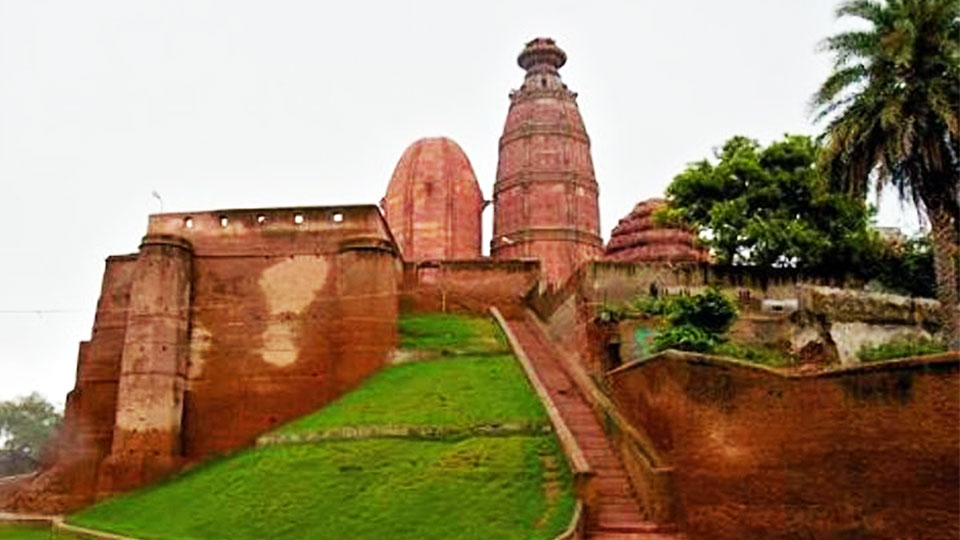
Nestled just a stone’s throw away from the bustling Banke Bihari temple, the Madan Mohan Temple stands tall atop the Dhanaditya Tila. It is often considered the oldest temple in Vrindavan. Located near the Kali Ghat, this temple was built by Kapur Ram Das of Multan. Legends whisper that this was the first temple ever constructed in Vrindavan, fulfilling the request of Sanatana Goswami. It is said that Sanatana Goswami himself discovered the idol of Lord Krishna worshipped here.
The temple’s ancient idol is believed to be one of three created by Krishna’s great-grandson. As you ascend the red stone staircase to the main temple, you’ll be greeted by an atmosphere steeped in history. Two adjacent structures, the older temple and the other a kirtan hall, stand as silent witnesses to centuries gone by, although they have fallen into disuse. From the hillock, one can catch glimpses of the serene Yamuna River and the renowned Banke Bihari Temple, adding to the temple’s allure.
Shahji Temple
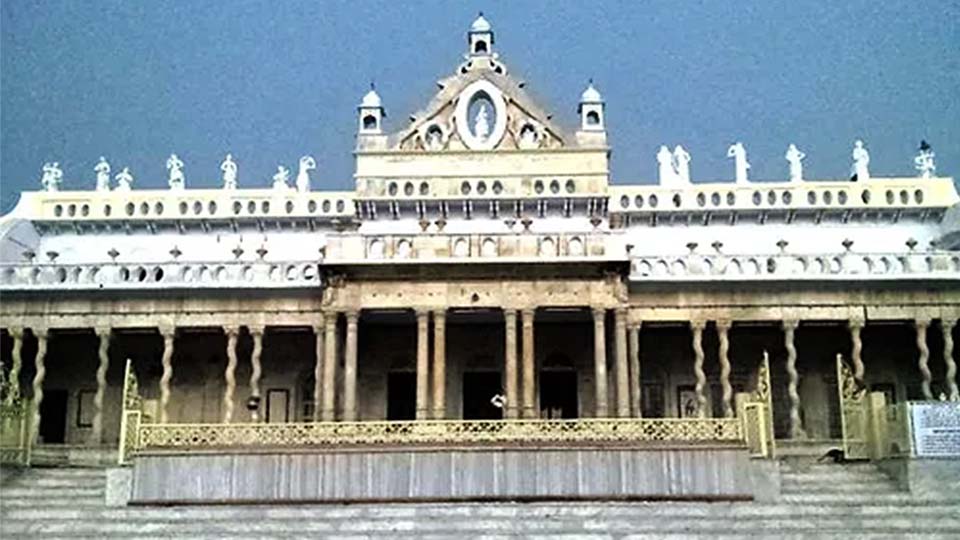
A masterpiece of architecture and a testament to devotion, the Shahji Temple was commissioned in 1876 by Shah Kundan Lal of Lucknow. This temple is renowned for its magnificent architecture and exquisite marble sculptures. As you step inside, you’ll be greeted by twelve spiral columns, each soaring to 15 feet. The hall itself is adorned with Belgian glass chandeliers and intricate paintings.
The Shahji Temple is a tribute to Sri Radha Krishna and was built as a palace for the divine couple. It seamlessly incorporates architectural styles from Lakhnawi, Rajasthani, and Italian traditions. The temple’s unique blend of these styles creates an enchanting atmosphere that transports visitors to a realm of divine love and beauty.
Rangaji Temple
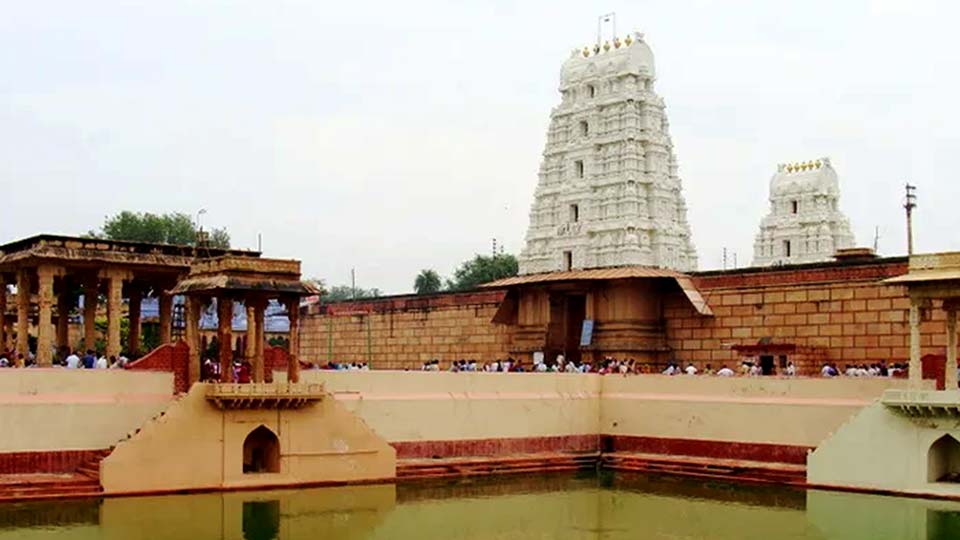
Dedicated to Lord Ranganatha, a form of Lord Vishnu reclining on the coils of the sacred Sesha Naga, the Rangaji Temple is a hidden gem in Vrindavan. Constructed in 1851, this temple boasts a towering gopuram with six stories and a gold-plated Dhwaja stambha that reaches 50 feet.
The Rangaji Temple is a splendid fusion of architectural grandeur and spiritual significance. You’ll be transported to deep reverence and awe as you explore its intricate architecture and soak in the divine aura.
Meera Bai Temple
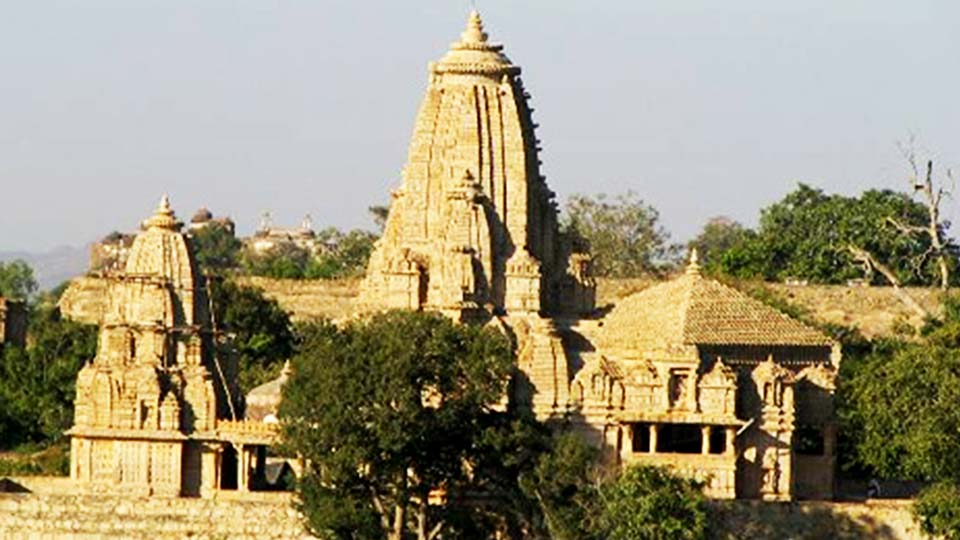
Nestled at the southern side of the Shahji Temple and close to Nidhivan, the Meera Bai Temple is a pristine monument dedicated to the legendary poet-saint Meera Bai. The temple exudes a sense of simplicity and purity with its modest courtyard and whitewashed walls. It is believed to be where Meera Bai attained the pinnacle of her spiritual sadhana.
For those seeking solace and a tranquil space for meditation, the Meera Bai Temple offers a peaceful haven. Here, amidst the echoes of devotion, one can reflect on the profound spiritual journey of this beloved saint.
Conclusion
In the heart of Vrindavan lie these hidden treasures, waiting to be discovered by the seeker of spirituality. These lesser-known gems, from the ancient Madan Mohan Temple to the architectural marvel of Shahji Temple, offer a unique and intimate connection with the city’s rich spiritual heritage. As you explore these tranquil sanctuaries, you’ll find solace and a deeper resonance with the divine, enriching your experience of this sacred land.
Vrindavan’s known and hidden secrets invite you to embark on a journey of devotion and discovery like no other, but always remember the list still goes on to infinity.
Frequently Asked Questions
Some lesser-known places to visit in Vrindavan include Seva Kunj and Nidhuban, Prem Mandir, Imli Tal, and Gopeshwar Mahadev Temple.
The Madan Mohan Temple in Vrindavan is one of the oldest and most revered temples, dedicated to Lord Krishna as Madan Mohan. It is indeed a must-visit for devotees due to its historical significance and connection to Sanatana Goswami, one of Lord Chaitanya’s chief disciples.
The Shahji Temple in Vrindavan is known for its stunning marble architecture and intricate carvings. It was constructed in the 19th century and holds historical significance for its association with the Vallabha Sampradaya and the teachings of Sri Vallabhacharya
The Rangaji Temple is known for its grand architecture and is dedicated to Lord Ranganatha, a form of Lord Vishnu. It stands out for its unique blend of South Indian and North Indian architectural styles, making it a distinctive place of worship in Vrindavan.
Meera Bai was a 16th-century mystic poet and devotee of Lord Krishna. The Meera Bai Temple in Vrindavan is significant as it commemorates her devotion and love for Lord Krishna. It is a place where devotees pay homage to her devotion through music and poetry.
Kesi Ghat in Vrindavan is associated with the legend of Lord Krishna’s victory over the demon horse, Kesi. It is believed that Lord Krishna defeated Kesi at this sacred bathing ghat, demonstrating his divine prowess.
Kokilavan Dham is a sacred forest in Vrindavan associated with Lord Shani Dev, the deity of Saturn. Devotees visit Kokilavan Dham to seek blessings and protection from the influence of Saturn.
Vrindavan’s hidden gems offer a quieter and more contemplative atmosphere compared to its famous temples, which can be crowded. These lesser-known places often have unique historical or mythological significance, adding depth to one’s spiritual experience.
Yes, most of these hidden treasures are accessible to tourists and pilgrims in Vrindavan. While famous temples are well-marked and often crowded, these lesser-known spots may require some local guidance or research to find, but they are open to visitors.
To explore Vrindavan’s lesser-known places and its spiritual heritage, you can start by researching each location, hiring a local guide, or joining a guided tour. Make sure to check the opening hours and any special rituals or events at these sites to plan your visit effectively.
Meet The Author

Krishna Kishor
Greetings! I’m Krishna Kishor, currently pursuing an MBA at IMT Ghaziabad, where I’m honing my skills in business management. While my academic pursuits keep me grounded in the corporate world, my heart finds solace in exploring the spiritual and cultural realms of our diverse world.

